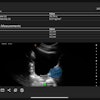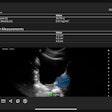
Teleradiology has always been a vital technology in the world of radiology. But the COVID-19 pandemic has sparked a boom in remote reading as radiology departments and imaging centers turn to teleradiology to keep their operations flowing smoothly in an era of social distancing.
There are signs this boom may continue for some time, particularly as a rebound in radiology volume appears to be on the immediate horizon. And even after the COVID-19 pandemic fades, radiologists and administrators may make permanent their embrace of remote reading, thanks to the many benefits that teleradiology confers.
Harnessing teleradiology
Teleradiology first came into common use in the 1990s with the adoption of the DICOM 3.0 image standard and higher-bandwidth internet connections. Initially developed to allow radiologists to read from home while on call, it soon contributed to an explosion of teleradiology providers that offer after-hours coverage and subspecialty expertise to healthcare providers. But during normal working hours, most hospitals and imaging centers continued to rely on the traditional model of radiologists interpreting images from centralized reading rooms onsite.
That began changing when the COVID-19 pandemic arrived in the U.S. in March 2020. Many institutions shut or reduced staffing in their radiology reading rooms to keep both patients and radiologists safe. They harnessed teleradiology as an internal social distancing tool to protect vulnerable radiologists and hospital workers, while simultaneously assuring seamless radiologic interpretation capabilities.
A small survey of radiologists published in July in the Journal of the American College of Radiology (JACR) reveals the trend. It shows that the majority of radiology practices surveyed have leveraged internal teleradiology for normal workday shifts and found sufficient benefit to potentially continue internal teleradiology services after the pandemic passes.
Before the COVID-19 outbreak, teleradiology was often used for call and overnight shifts, the survey found. But after the pandemic hit, the survey found an overall increase in the proportion of practices installing new home workstations -- 65.2% -- and switching normal daytime shifts to internal teleradiology -- 73.6% -- in a similar fashion across the different geographical regions. At the same time, the survey found no growth in the use of external teleradiology firms.
But setting up radiologists to read from home didn't come without technical challenges, such as providing radiologists with the appropriate software and hardware, secure and speedy connections, and peripherals.
The University of Tennessee only had a teleradiology infrastructure in place for the night shift before the COVID-19 pandemic, according to Dr. Mohammed Imran Quraishi of the department of radiology, a co-author of the JACR paper.
 Dr. Mohammed Imran Quraishi.
Dr. Mohammed Imran Quraishi.Quraishi's group hadn't traditionally used external teleradiology, but they had allowed internal teleradiology for night shifts.
"Internal teleradiology was otherwise rare. Day-shift internal teleradiology only occurred in the extremely rare event of a scheduling issue where a geographically remote, normally night-shift radiologist would fill in," Quraishi said.
But with COVID-19 cases surging, the University of Tennessee decided to change its approach rather than seek out the services of an external teleradiology provider, he said. The department's executive board greenlighted the installation of home workstations at nearly all attending radiologists' homes to reduce exposure to SARS-CoV-2 and to have more hands on deck if there is a surge of studies, he stated.
"Because of the COVID-19 pandemic, we installed home stations at nearly all attending radiologists' homes for a day-time internal teleradiology option, regardless how geographically remote they are," Quraishi told AuntMinnie.com. "In the hospital, we moved from a centralized reading room and placed single workstations in multiple offices for social distancing,"
Even though Quraishi's department has not experienced any noticeable change in radiologist productivity after allowing internal radiologists to read from home, it plans to keep home reading stations available, and remote reading will remain an option.
On the other hand, Dr. Avez Ali Rizvi, a radiologist at Valley Radiology and Associates in Harlingen, TX, and a co-author of the JACR study, said in an interview that his practice already had in-home workstations and infrastructure in place prior to the pandemic.
 Dr. Avez Ali Rizvi
Dr. Avez Ali Rizvi"All our diagnostic radiology calls occurred from home. This included evening shifts and weekend shifts. Roughly 20% of all interpretations occurred from home," he said.
That trend has accelerated markedly during COVID-19.
"We have shifted to reading from home on a more frequent basis. In the past month, we've introduced a 100% remote reading shift for one of the hospitals that Valley Radiology services for the first time in practice history," Rizvi said. "We've also allowed our radiologists to limit in-house reading if no patient procedures are scheduled, such as interventional or fluoroscopy procedures."
In terms of a larger work-from-home movement, COVID-19 generally shifted radiologists to read from home, and it appears they'd like to continue that once COVID-19 is over, Rizvi noted.
"That is the essence of what the data shows," he said. "Moreover, since external teleradiology provided by larger corporate practices is already practiced at home, this data should be a signal to the rest of the academic community and private practices about the desires of radiologists postpandemic -- a not-so-subtle hint to offer teleradiology-at-home options going forward."
Remote reading in place
Since 2016, California's Sutter Medical Group has supported radiologists across its system with home-based reading diagnostic workstations that it was able to leverage during the COVID-19 outbreak, according to Dr. Jason Wiesner, a practicing radiologist in the group as well as the medical director of Sutter Health's diagnostic imaging service line and director of imaging informatics.
After the PACS conversion and before the pandemic, about half of Sutter Medical Group's radiologists had home workstations. After changes motivated by the pandemic, over 80% are now equipped with the ability to read from home, and the number of regularly scheduled daytime remote reading shifts has doubled.
 Dr. Jason Wiesner.
Dr. Jason Wiesner."Before the coronavirus pandemic, this was less than 10 shifts per day; and at the peak we were up to 23 shifts scheduled at home each day," Wiesner said in an interview with AuntMinnie.com.
Recently, Sutter Medical Group moved a number of these shifts back on-site to work down a backlog of procedures, but it is still seeing the benefits that remote reading flexibility provides to the practice, he explained. Most of Sutter's remote working configuration will remain in place after the pandemic is over, Wiesner said.
No future outsourcing of radiology reading services at Sutter Health is expected beyond what's already been done.
"I think it helps us maintain a lean staffing model going forward, giving us an ability to address variable volume levels by having radiologists remotely on-call to read," Wiesner added.
This approach also would help the practice handle future surges in volume as group members are more willing to pick up full or half shifts if they know they can log on and read from home, he noted.
Collaborative effort
 Dr. Marla Sammer.
Dr. Marla Sammer.In response to the COVID-19 pandemic, radiologists at Texas Children's Hospital and Baylor College of Medicine quickly deployed home PACS workstations by working together with management and colleagues and breaking administrative barriers.
In an article published online ahead of print in the American Journal of Roentgenology in June 2020, Dr. Marla Sammer and colleagues described their department's transition to a mostly work-from-home model.
"Using creative solutions, our department was able to make a rapid transition to largely working from home," Sammer et al wrote in the article. "This was accomplished by both acquisition of new off-the-shelf workstations and reallocation of noncritical hospital PACS workstations to homes."
Sammer et al wrote that their hospital-based radiology department of 41 radiologists successfully installed 22 home PACS workstations within 10 days, thanks to an expedited purchase of 12 new off-the-shelf systems and by reallocating 10 existing hospital workstations to homes. Three radiologists already had home PACS workstations for emergency situations, resulting in 25 operating home PACS workstations.
"The ability to work from home has primarily been used to facilitate physical distancing for rotations that would usually be worked in the hospital or clinic," said Sammer in an interview. "This has allowed us to decrowd our reading rooms."
 Dr. Andrew Sher.
Dr. Andrew Sher.The department quickly converted diagnostic staffing from 100% in-house as of March 13 to approximately 80% offsite as of March 20.
"Before COVID-19, the radiology department had piloted teleradiology as a proof-of-concept on a few workstations," explained Dr. Andrew Sher, the radiology department chief of informatics at Texas Children's Hospital, in an interview with AuntMinnie.com. "Following Hurricane Harvey in 2017, we worked on a way to provide service in the event some staff could not make it safely into work, but none were reading regularly from home."
Dealing with the volume drop
The COVID-19 pandemic has significantly affected radiology case volume and the scheduling of elective imaging, as well as changes in interventional procedures and offsite workflow.
"Average volume fell approximately 60% from March to April, although it has since returned to approximately 80% of pre-COVID level," Sher said.
One group led by Dr. Jason Naidich of Northwell Health in Manhasset, NY, in a May 16 study in the Journal of the American College of Radiology found an overall 28% decline compared with 2019 in the total imaging volume at Northwell's network over a seven-week period during the COVID-19 pandemic. The drop included all patient service locations and imaging modality types.
The decline in cases reported nationally was also seen at Valley Radiology and Associates, where there was about a 60% decline in overall volume of diagnostic imaging cases in March and April, with a peak decline near mid-to-end of April, according to Rizvi. Volume currently is roughly 80% to 90% of pre-COVID numbers.
Radiology volume at Sutter Health was also hard hit by the COVID-19 pandemic, according to Wiesner.
"We had about a 50% decline in imaging volumes generally. In some modalities, like mammography, the decline was 70%, as we actively deferred routine exams until it was safer for our patients to come in," Wiesner said.
As of July 31, imaging volumes had returned to approximately 90% of pre-COVID-19 levels, and Sutter is now working through a backlog of exams with new, enhanced safety procedures in place, such as frequent cleaning, universal masking, and social distancing in the waiting rooms.
"This is our 'COVID new normal,' and it is an attempt to balance what is safe for our patients and staff with the need to get patients in for medically necessary imaging studies," Weisner said.
Recent data confirm the experience at Sutter that radiology volumes are picking up. Elective procedures that were put on hold are back on the schedule -- and teleradiology connections set up during the height of the pandemic will be available to help radiologists cope with the surge.
To prepare for the post-COVID-19 surge in imaging, the radiology departments at Texas Children's Hospital and Baylor College of Medicine have altered their staffing based on real and anticipated volumes, including changing radiologists' clinical hour balances with academic and administrative responsibilities. These anticipated changes in volume are to care for surges of patients with COVID-19, as well as a post-COVID rebound in imaging, according to Sammer.
She said the new fleet of home workstations has been invaluable in many scenarios, including for radiologists who have needed to stay at home or quarantine due to personal illness (including COVID-19) and for high-risk groups. The home workstations have also been used to allow radiologists to handle child and elder care responsibilities.
"With the home workstations, our ability to respond to natural disasters and mass casualty incidents has improved," Sammer explained. "In light of Hurricane Laura, we were able to flex even more of our staff to working from home."
Putting the genie back in the bottle
But what will happen to teleradiology as the COVID-19 pandemic recedes? Will radiology go back to business as usual and bring daytime reads back onsite?
There are signs that it may be tough to put the teleradiology genie back in the bottle, now that staff radiologists have had a taste of reading from home. And remote reading is becoming popular with administrators, too, particularly as teleradiology appears to have improved radiologist productivity. It seems that many institutions and practices will continue all or some of their teleradiology services after the pandemic subsides.
At Texas Children's Hospital and Baylor College of Medicine, they are studying potential differences in productivity when working from home compared with in-house, but they do not yet have definitive results, according to Sammer.
"We have not experienced any noticeable change in productivity. Anecdotally, radiologists' perception of productivity is variable, with some reporting increased clinical productivity, and others decreased," she stated.
Also, because of the potential for power outages, to work from home, the radiologist would need to equip their house with a generator.
On the other hand, "While productivity must be considered, other factors are also vital. If radiologists experience less burnout working from home, potential decreases in productivity would be considered a welcome trade-off," Sammer said.
In the future, the department plans to have at least some staffing from offsite on a daily basis and to outfit each diagnostic radiologist with a home workstation, she said.
A buy-in from Medicare has played a big role in teleradiology's persistence. In March, Medicare relaxed the rules for providing telehealth services for the duration of the COVID-19 public health emergency. While telehealth services are often restricted to patients in underserved areas, the emergency declaration broadened access to telehealth services to include patients and physicians regardless of their physical location.
Moreover, the temporary waiver indicates that the U.S. Centers for Medicare and Medicaid Services (CMS) will not challenge the existence of an established patient relationship, allowing telemedicine services to be provided to new patients.
Passion for teleradiology
Now that radiology is through the first phase of the COVID-19 pandemic, Sutter Medical Group's Wiesner believes that the two big drivers of teleradiology going forward are work-life flexibility and gains in productivity.
"When they have the ability to work a shift from home, most of our radiologists are relieved to be able to avoid the commute to work," he said.
Sutter Medical Group has been encouraged by the fact that when its radiologists read from home, they are actually more productive than when they are in the office. There are fewer distractions at home, but there is also a general sense of being more satisfied with the work.
"Happy doctors are better at what they are trained to do, and that point can't be overlooked," Wiesner added.
One indication that teleradiology likely will continue at Texas Children's Hospital is the passion that Dr. Thierry Huisman, radiologist in chief at the department, feels about the technology.
 Dr. Thierry Huisman.
Dr. Thierry Huisman.Home workstations make it possible for a more general emergency pediatric radiologist to cover most acute patients after hours and over the weekends in the hospital, while having a backup subspecialty pediatric radiologist -- a pediatric neuroradiologist, among others -- at home for the occasional challenging case that would go beyond the expertise of the general emergency pediatric radiologist, he said.
A key factor is that the subspecialist pediatric radiologist does not have to be in the hospital 24/7, but she or he can support from home whenever necessary.
Also, home workstations enable institutions to expand radiology operating hours to optimize patient visiting times and work-life balance for radiologists, explained Huisman. Other positives for teleradiology include the following:
- It allows for remote teaching of trainees.
- Review of imaging studies for research projects can be done remotely at any time.
- It enables the home radiologist to remotely support and guide technologists performing imaging studies.
"The COVID-19 pandemic basically was an accelerator for the rapid system-wide rollout of home workstations," Huisman pointed out in an interview with AuntMinnie.com. "There is no going back; we will continue to have home workstations in our daily work."



















